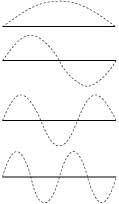Evolution of the universe
1999/11/01 Agirregabiria, Juan M. Iturria: Elhuyar aldizkaria
Among the fundamental problems of present-day cosmology, the homogeneity and isotropy of the Universe stand out. Astronomical observations show that all points of our Universe and all directions are equivalent to large-scale. It can be thought that this is so from the beginning because the Universe was an isotrope, but hopefully, regardless of the initial conditions, we would find a suitable physical mechanism to make the isotrope twist. It seems that it would be simpler and more natural than the mechanism that chose the initial conditions in a very particular way.
In recent years, models with inflation have been used in the standard theory of the Universe to explain isotropy. In these models, for physical reasons, the size of the Universe increased in a very fast period of time. In our group, we studied inhomogeneous and anisotropic models of the universe to see if inflation, and the isotropy involved, occurs in most initial conditions.
About five years ago, the Venetian physicist, who works at CERN, proposed another mechanism to explain the problem of isotropy: Prestellar cosmology. As is well known, it seems inevitable that the Universe was born in Einstein's General Relativity Explosion. But it is possible that in the quantum theory of gravitation, which we do not yet know, they do not exist. Taking advantage of the symmetries that appear in the theory of superstrings, Venetian proposed a new era of the Universe before a quantum alternative to the classic Great Explosion occurred. If there it became isotrope, in the present time the initial conditions were necessarily isotropic troops. To analyze this idea, among our subjects are the precise cosmological models of the theory of small energy superstrings.
We have said above that the Universe is homogeneous and isotrope on a large scale. In this large scale of cosmology, galaxies are like drops of water or rays of dust. It is clear, on the other hand, that if the scale is not so large, the Universe is not homogeneous and isotrope: being close to a star or galaxy and missing in intergalactic space is not the same. Modeling a star in General Relativity is supposed to be alone in the Universe and, on the other hand, the influence of isolated stars and galaxies in cosmology is rejected. In 1945, Einstein, together with Straus, was responsible for finding an adequate relationship between these two extreme views. We also analyze in our group how the inhomogeneities of lower range of galaxies (or stars) are placed in a homogeneous universe.
Although the theory of concrete (classical) gravitation is General Relativity, in many cases Newton's Universal Gravitation remains adequate today. Since both theories are useful, it can be interesting to analyze how the description of certain phenomena changes when moving. In this field, we focus on the balance of charged particles, investigating in General Relativity what are alternatives to the simple equilibrium conditions of Newton's theory.
Finally, we analyze the appearance and properties of deterministic chaos in General Relativity. In the typical definition of chaos, the difference between two similar systems, initially practically inseparable, increases exponentially as time advances, but the basic nature of General Relativity makes it not always easy to know the time that must be devoted to defining chaos in the aforementioned theory. Therefore, special techniques for defining and measuring chaos in cosmology and general relativity are required. One of them is the first we have used in this field: chaotic dispersion. In it appear aspects of chaos that do not depend on the definition of time.

Gai honi buruzko eduki gehiago
Elhuyarrek garatutako teknologia






